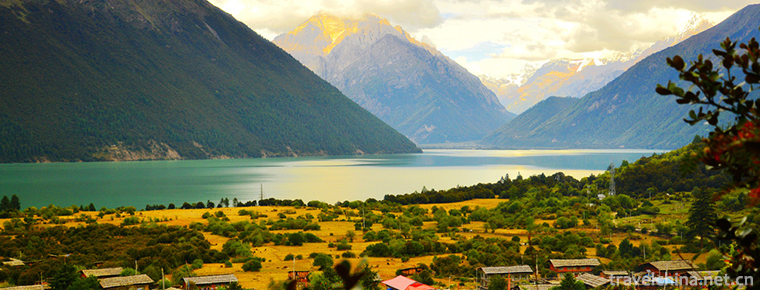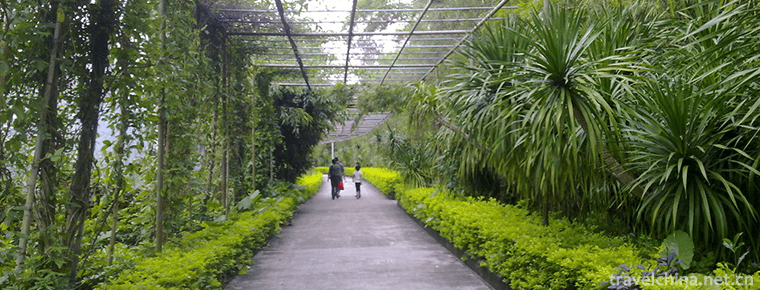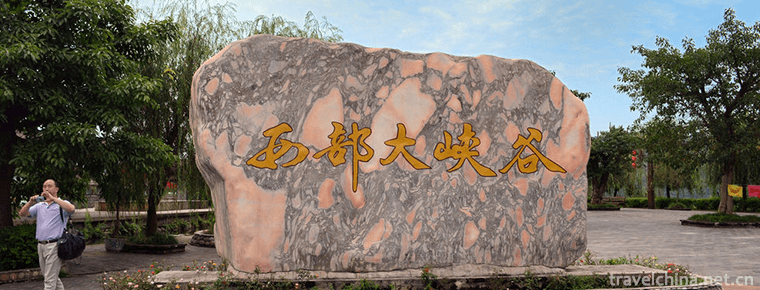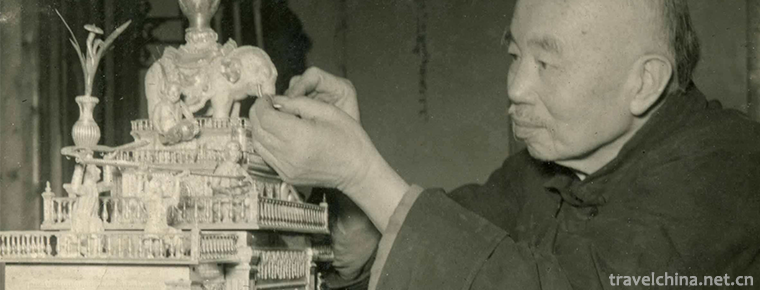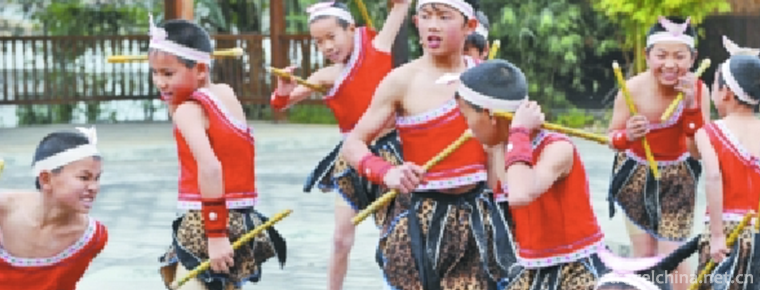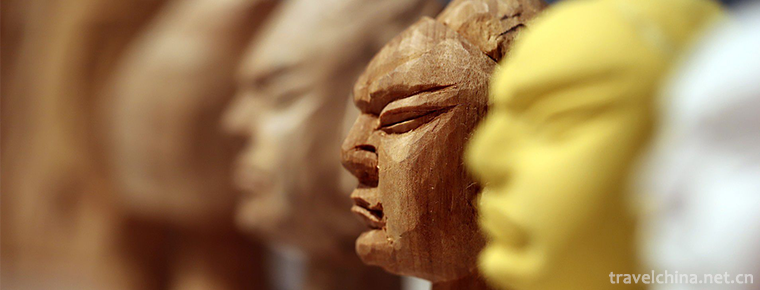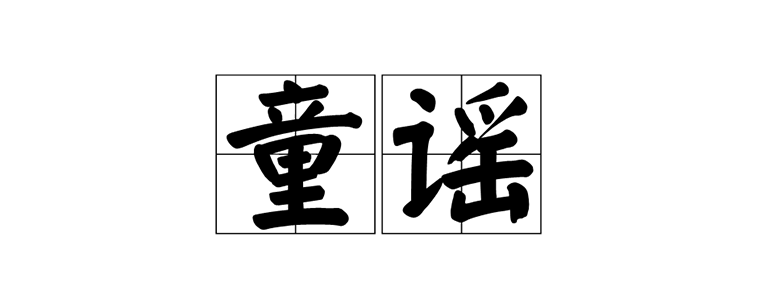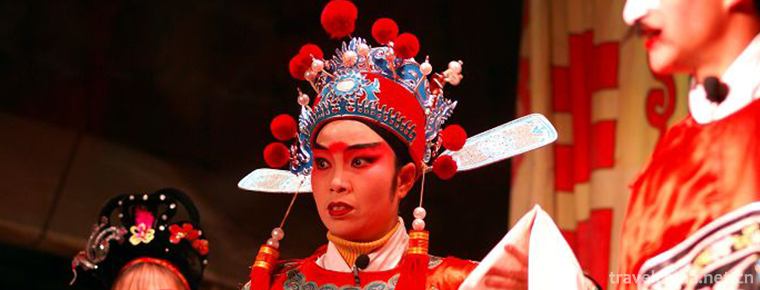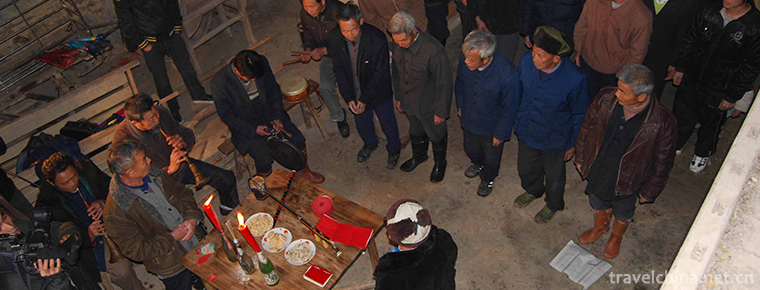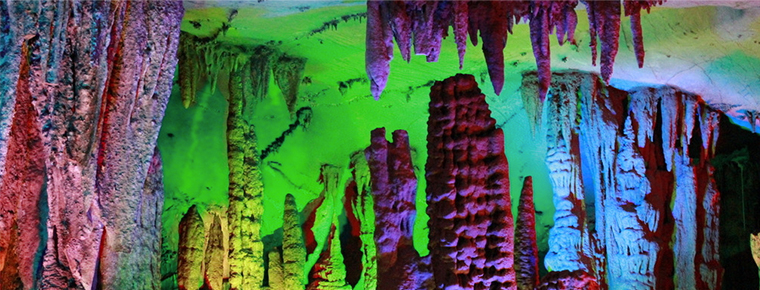Uygur Costume
Uygur Costume
Uygur costumes - more patterns, very beautiful, full of characteristics. Uygur men - pay attention to black and white effect, so bold and unrestrained. Uygur women prefer to use contrasting colors to make the red brighter and the green greener. Uygur is a flower-loving nation. People wear embroidered hats, embroidered clothes, embroidered shoes, embroidered towels and embroidered bags. Clothing and clothing are closely related to flowers.
On June 7, 2008, the "Uygur costumes" declared by Yutian County, Xinjiang Uygur Autonomous Region, were listed in the second batch of national intangible cultural heritage lists with the approval of the State Council.
historical origin
Clothing is also known as "clothing", because people wear clothes, not only to cover the body warm, but also has an important role in beautification. Uygur costumes have clear forms, diverse decorations, distinct colors, simple patterns and exquisite workmanship. Their development and evolution are clear. Some costume styles are quite similar to those unearthed in Xinjiang, reflecting the historical precipitation of a region and a culture. The aesthetic acceptance paradigm with distinct national cultural characteristics reveals the inheritance and regional customs of national costumes.
After liberation, especially since the 1990s, with the improvement of people's living standards, great changes have taken place in Uygur clothing. Suits and fashionable clothing have become more and more popular among Uygur people, especially young men and women.
artistic characteristics
Men's wear
Uygur clothing is generally loose. Men's wear is relatively simple, mainly Aktik (long coat), Tony (long gown), Paisimat (short jacket), Nimcha (jacket), Kuyneck (shirt), waistband and so on. Uygur people call their coats Yufu. These clothes are mostly made of black and white fabrics, blue, grey, white, black and other natural colour groups of silk and satin.
Uygur men in the past usually wore long coats with knees, wide sleeves, collars and buttons. They wore a long waistband at the waist. The waistband could play the role of buttons and pockets. They carried food and other sporadic items with them. The waistband can be as long as 2 meters. There are also square waistbands. When tied, it shows a corner around the waist. The scarves are mostly black, brown, blue and other dark colors. Usually the scarves are not very particular. The scarves fastened on festivals are usually very bright, some are printed and some are embroidered. Uygur men wear Yu loops and waistbands, which makes them look different. Rich people used to wear long gowns outside their robes.
Uygur men's shirts mostly do not open the chest, long to the knees, buttocks. Young people and children's shirts are laced. Religious professionals often wear long white cloth around their heads. Uyghur is called "Selan". They wear long gowns without belts outside their coats, which is quite different from ordinary people.
The loops are the modern Uygur national men's clothes. They are mainly in the style of "loops". Although similar to the ancient form, modern national costumes pay attention to the texture of fabrics, loose style, elegance and generosity. Most of the styles are long coat over knee, pair of skirts, long sleeves over finger, collarless, buttonless, and a waistband tie is both tight and comfortable to keep warm.
"Lobster" (robe), like to use color strip silk as fabric, which is a popular traditional clothing name "Checkman", followed by "Baihe San", it weaves fine, soft clothing, is a good sewing "Lobster" fabric. Older ones are cut in black, dark brown and other fabrics, which are simple and generous. The lower part of the body is covered with blue trousers and feet. Pay attention to men's trousers, in the corners of the trousers followed by decorative flower patterns, mostly plant stems, vines, branches and vines constitute a continuous decoration, appears elegant and beautiful.
Young men's clothes are vigorous and vigorous. They are sewn with white fabrics in the second quarter to make collar-style clothes. Their collar, chest and cuffs are all laced with lace. Their waist is tied with "Pota" (waistband), which is named "Tony" or "Yeketaike". This dress is not only elegant and cool, but also very convenient to wear. It is also equipped with blue trousers, leather boots and full-body wearing into a strong national costume. Color, more youthful vitality and fitness.
Uygur trousers used to be crotch trousers. They were simple in style. They were divided into single trousers, jackets and cotton trousers. They were mainly made of various fabrics, and also made of sheepskin and dog skin. Men's trousers are usually shorter than women's trousers and have narrower corners. Most Uighur men wear pants.
Women's wear
Uygur women like to wear skirts, like to choose bright silk or wool tailored skirts, common red, green, golden and other colors of material, wearing light skirts. More preference for the original "Adlai Silk" sewing dress. Every festival or festival, or even weekend, from the streets, villages, mountains, you can see everywhere wearing different colors, patterns of Adlai silk sewn dress. Silk patterns, like clouds, are bright and gorgeous, revealing the spiritual gifts of the creator. Uyghurs call it "Jade Pop Neng Kanatiguri", which means bringing people a breath of spring weather and good wishes. Women's trousers have large corners, long trousers and naked bones.
Uygur women have many kinds of clothes, including long coats, short coats, shoulders, vest, shirts, trousers, skirts and so on. Uygur women used to wear colorful dresses and trousers. Skirts are mostly tubular skirts, with short upper body to chest, wide lower body and long legs and stomach. Uygur women, apart from dresses made of various colors of cloth, prefer to use Adlais silk, which is a kind of silk specially used for dresses and skirts and has a unique national style. Uygur women often wear coats or shoulders outside their dresses. The skirt wears pants. The pants are mostly made of coloured printed fabric or coloured silk. The pants are fastidiously made of monochrome fabric. Then some flowers are embroidered on the corners of the pants. Women's long coats mainly have two kinds of collar and straight collar. Young women like to wear bright colors such as red, green and purple. Older women like to wear black, blue, dark green flowers, scattered silk, satin or cloth. Their clothes are decorated with copper, silver, gold spherical, circular, olive-shaped button loops. They pay attention to embroidery at the collar, cuffs and other places. There are three kinds of women's jackets: the jacket with opposite skirts, the jacket with right jacket and the jacket with half open right jacket.
Uygur people not only like to grow flowers, but also like to embroider various flower patterns on clothing. Uygur women like embroidery at the neck, chest, cuffs, shoulders, trousers feet and so on. The men's clothes are also embroidered with patterns, mainly in the neck, chest, cuffs and other embroidery of the collar shirt, showing the strong decorative aesthetic feeling of the Uygur people.
Uygur women like to wear earrings, rings, necklaces, brooches, bracelets and so on. Girls begin to pierce their ears and wear earrings when they are five or six years old. I like to use "Ottoman" juice to describe eyebrows. In winter without Ottoman, I use "Sulmer" (graphite) or calamus to describe eyebrows, making the already dense eyebrows appear darker. I dye my nails with "Haineguri" (Fengxian flower), wipe my hair with "Elimu" (geranium), use the petals of red flowers as rouge and lipstick, and use cherry and rose juice to mix. Face and lips are the most ideal natural cosmetics commonly used by Uygur women.
Every festival, visiting relatives and friends, Uygur women put on colorful and gorgeous jewelry ribbons, bright skirts, elaborate decoration and dress, adding infinite charm. These customs express Uygur women's pursuit of beauty. Uygur people take long hair as their beauty, and women like to wear long braids. In the past, unmarried girls preferred to comb many small braids. After marriage, they changed to comb two long braids, but they still had bangs and symmetrical forward curled hair on their cheeks. The braided ends are scattered, and the comb with a crescent shape is preferred on the head as decoration, as well as the double braided dishes.
Among the Uygur dresses, the women's dresses in Yutian, Minfeng and the last area of Hetian area are different from those of Uygur women in other places, and they have their own unique characteristics. They wear white scarves and "Tarry Parker" (cap) on the right side of their head. This kind of cap has a big mouth and a small top (about 8 centimeters in diameter). It looks like a button bowl and a flower from a distance. It has a special interest. Their Changyu loops (coats) are arranged in sequence, with seven symmetrical pointed blue silk patches and single edges of the same color silk at the sleeve collar and bottom. In addition, there is a matching collar half-open pullover shirt. Nine pieces of shirt are arranged on the right side in turn in a fan-shaped pattern, embroidered into a wide strip pattern, with a wide edge at the round neck, with corners and fragments at the bottom, and two cords of the same color in the middle of the collar. It is said that this kind of clothing was an arrow suit worn by men and women in ancient warfare and hunting. The seven patterns on both sides were originally arrow bags, which later evolved into decorative patterns.
Hat
Traditional hat
There are many kinds of Uygur hats and headwear. The most distinctive Uygur men and women in Uygur costumes like to wear hats, because wearing hats not only has the function of preventing cold or heat, but also is more important as the need of life etiquette. It is necessary to wear hats in social, family visits, friends and festival gatherings. Uygur traditional hats are mainly leather hats and flower hats.
Leather caps are mainly used for cold protection, mostly made of sheepskin, but also fox skin, fox skin, rabbit skin, Marmot skin, sea otter skin, mink skin and so on. There are mainly the following:
1. Whitemark
Mainly worn by young men, like a deep bowl, made of sheepskin, with wool inside, leather outside, the top has four thick water chestnuts, at the bottom, with a circle of white or black edges.
2. Atushi Tumark
The cap is made of black velvet or velvet, similar to the shape of a bowl, shallower than Kashgar Tumark, with a circle of wool edges along the lower edge made of marmot or mink skin.
3. Selpichet Tumak
It is the same shape as a white leather cap, but the fabric is made of velvet or velvet, with thin edges, and mink or other animal skins. The cap is usually worn by middle-aged and old men and religious people.
4. Euretumak
The cap is about 30 cm high, trapezoidal and columnar in shape. It has two layers inside and outside. It is made of ordinary wool skin and black lamb skin. It is worn by both male and female farmers. The female cap is mainly worn by elderly women.
5. Cut-wood Turmak
The edge is wide and sewn with otter skin. The top of the cap is made of black or coffee velvet and velvet. This cap used to be worn by ladies.
6. Kulakcha
Uygur people often wear leather caps in winter, the basic shape is round, with long flaps on both sides, which can move up and down. One of the main types of Kulakcha is the lamb skin Kulakcha, which is made of lamb skin. The color part is black or gray. Its flaps on both sides can not be turned down. It is only an ornament; Kali Parker (felt cap), inner felt and outer cloth, and so on.
Leather cap was originally worn in winter, with the function of warmth and cold protection. However, the Uygur people have the custom of wearing leather caps in summer, because it also has the function of keeping the head skin moist and heat-proof.
Characteristic Flower Cap
Uygur flower caps are not only excellent in material selection, but also in craftsmanship. Uygur craftsmen who make flower caps have a set of "unique". The patterns and patterns of flower caps are changeable. The patterns, patterns and patterns of flower caps are also related to the regional environment. Flower caps in different places have obvious local characteristics. Kashgar area has a variety of flower caps, especially male flower caps. The pattern of "Badan wood" with black background and white pattern, strong color contrast and elegant style, is composed of lines of decoration. It protrudes from the corners and shows a three-dimensional sense, but it deeply impresses the black and white in people's minds. The flower caps in Hetian and Kuqa areas are made of high quality velvet fabrics with different colors of velvet knitting patterns, which are dense and compact, resulting in the pattern overflowing with unique charm. Some flower caps are ornamented with beads, gold and silver jewelry pieces, which are round and glossy. The factors of pattern structure are skillfully used to make flower caps flourish. Others have prominent decorations on the top of flower caps, exquisite knitting of colored thread, and glittering balls, which are the bride's favorite. The flower caps in Turpan are famous for their brilliant colors. The bright red pattern matched with the emerald green pattern is like a wonderful flower. The flower caps in Yili area not only highlight the flowing sense of lines, but also have the advantages of elegance and generosity. The shape of flower caps is flat, shallow and round, and the patterns are concise and concise.
1. Budam Flower Cap
It is a pattern of apricot nucleus deformation and pattern addition in Badanmu. Its patterns and gestures are rich and varied, mostly white flowers with black background. It is solemn, simple and generous. Uygur men, old and young, all like to wear this kind of flower cap.
2. Tashkent Flower Cap
Originally a popular flower cap in Tashkent, it is a generic term for the lattice embroidery geometric pattern cap. It is loved by the majority of young men and women. The general color contrast is strong, and the red is shining like a blooming flower bush.
3. Grammy Flower Cap
That is, velvet caps, caps like carpet suede, embroidery is labor-intensive, less, but widely loved by young men and women.
4. Manbol Flower Cap
Top embroidery has four sets of circular patterns with four sets of rectangular or circular patterns. It is the most common kind of flower cap worn by men, women, old and young.
5. Chiman Flower Cap
It is also a common flower cap. The cap takes the meter character as its skeleton, the branches and leaves are interlaced, and the patterns are connected by branches or separated by lines. It has many positive and negative triangular and diamond patterns. The cap surface pattern is similar to the arrangement of carpets, also known as Chimantashkendopa, worn by women.
6. Zaire Flower Cap
That is, gold and silver thread embroidered cap, is a girl, women's favorite kind of flower cap, embroidered flowers are mostly three-dimensional, shining in the sun, giving people a sense of dignity.
7. The Mari River Doppa is one of the most popular flower caps worn by girls and girls.
8. Golden Flower Cap
It is decorated with pressed and carved gold pieces on the cap. It is a very valuable flower cap worn by wealthy women in the old days. No one can see the wearer of this kind of flower cap.
9. Turpan Flower Cap
It is a kind of flower cap popular in Turpan, Shanshan and Toxon. It is characterized by large flowers and small space, and the color is particularly red and bright, only the elderly in this area also wear this gorgeous flower cap. Most of them use green as the background color.
10. Ili flower cap
It is a kind of generous and elegant flower cap popular in Ili area, which can be worn by both men and women. It has fine patterns and soft colors. Five-petal flower cap, Uyghur called "Baixi Taradopa". Generally, the flower cap is made of four petals sewed together, and this kind of flower cap has one more petal than the ordinary flower cap. It is a kind of flower cap worn by boys and girls. The cap is smaller and the pattern is simpler. Most of them use red as the background color.
11. Shaparker hat
The melon skin cap is a kind of cap worn by men in the south of Xinjiang in summer. Sometimes it is used as a lining cap in winter. Most of the caps are plain and some have water marks at the mouth of the cap.
12. Selivsitumak
Namely, the tall flower cap, also known as Selandopa, is mostly worn by religious clergy and entangled with Selan. 13. Akdopa
It is a white hat with white thread and pattern. It is a kind of hat worn in church.
Shoes and boots
Uyghur people wear shoes and boots is a traditional custom, which has a long history and can be traced back to more than a thousand years. Their ancestors used to be nomads in alpine snow collars, roaming across the vast western frontier on the rich land of the nomadic nation. Boots are easy to ride and shoot, also known as warm and cold-resistant "footwear". "Yi Ya" cloud: "performing rituals, ornament foot, so it."
Uygur shoes are mostly made of cowhide. Most of the workers living in farming and pastoral areas make their own shoes. There are also folk craftsmen who make shoes and boots. They have mastered a set of traditional skills from making wood last to selecting leather, tanning leather to making leather shoes and boots. They are skilled and skilled, not inferior to the shoe factory workers. Due to the stability of economic life, convenient transportation and reasonable price of shoes and boots, modern Uighurs also go to shops to buy shoes and wear them.
Uyghurs living in cities and towns like to put rubber shoes on their shoes and boots. This is a good hygienic habit. Whether visiting relatives or friends or living in their own rooms, they take them off outside the door in front of the house in order to prevent dirt and dirt from coming into the house. Generally, there are two styles of overshoes, one is round-headed overshoes, the other is soft-soled leather overshoes.
"Boots" are long-waisted leather shoes, "Sui Shu Li Zhi VII" said: "Boots, Hu Lu also." Western Regions have a long history of wearing boots. They have been adapted to the cold climate in Xinjiang since then. They are also a kind of footwear created for the convenience of riding horses and grazing.
Uygur ancestors have experienced a long hunting and nomadic life. In order to adapt to this life, they developed the custom of wearing "Yutuke" (leather boots), which is still popular among Uygurs. Uygur footwear mainly includes "Yutuke" (leather boots), "Go Ruke" (leather nest), "Buy a match" (soft boots), "Kaixi" (leather shoes, similar to slippers, mostly worn in summer), and "Karasi" (slippers). Uygur people's shoes and boots are mostly made of cattle and sheep leather. In the past, Uygur women's boots were embroidered with various patterns, which were very beautiful. Uygur men and women like "Yutuke" (leather boots). Middle-aged and elderly people wear "Buy a match" and "Karasi" (overshoes) outside. In the past, Uygur people used to wear leather-made "karasi" and rubber-made "karasi", which can not only keep warm, but also protect boots and shoes. When entering a room or mosque hall, they should take off their overshoes to keep the room clean. In cold places, felts are worn in winter.
Inheritance Significance
Because of the taboo idolatry in Islam, it is taboo to depict characters and animals in costumes, ornaments and buildings. The Uyghurs who love beauty wisely turn to the pattern art creation with the content of natural objects. Because Uygur people once believed in Shamanism, Zoroastrianism and other factors such as the worship of nature, Uygur people to the extreme of the content of the natural image of the pattern art creation. They adopt various flower patterns, plant branches, leaves, vines, fruit patterns, pots, bottles, stoves, altars, pianos and other objects in real life as decorative patterns, and use straight lines, curves, arcs to form square, rectangular, circular, triangular, rhombus, star, crescent, zigzag and other various regular or irregular geometric patterns, to their heart's content. Points of Uygur clothing, Uygur women's skirts, cantilevers, Uygur men's loops, waistbands and so on, all show the beauty of Uygur clothing with unique Islamic style.

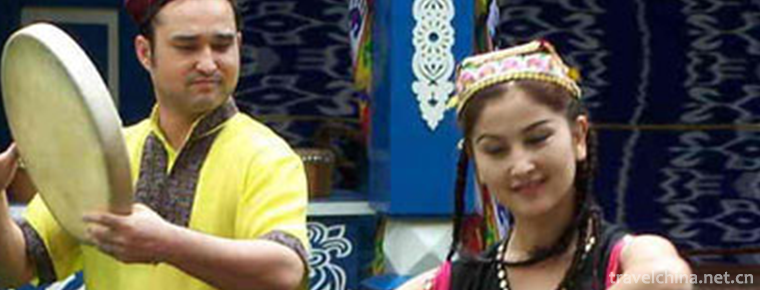
-
Linzhi Basongcuo Scenic Area
Basongtao, also known as Caogao Lake, means "green water" in Tibetan. It is about 18 kilometers long. Its surface area is about 27 square kilometers. .
Views: 158 Time 2018-12-12 -
Yeliguan Scenic Area
Yeliguan Scenic Area is located in Lintan County, with Yeliguan of Lintan County as the center. It is divided into four scenic areas: Lianhuashan, Xixia, Dongxia and Yehai Lake..
Views: 156 Time 2018-12-26 -
maoming forest park
Maoming Forest Park is located in the western suburb of Maoming City, Guangdong Province. It is only 12 kilometers away from the urban area and covers an area of more than 4500 mu.
Views: 185 Time 2019-02-07 -
Western Grand Canyon
Western Grand Canyon Hot Spring is a national AAAA-level tourist attraction, located in Shuifu City, Yunnan Province, 32 kilometers away from Yibin City, Sichuan Province.
Views: 121 Time 2019-02-25 -
Ancient Clock Repair Skills
Behind the Cining Palace in the Palace Museum of Beijing, there is a row of red pillars and grey tiles. A group of "craftsmen" have been dealing with the treasures of the deep palace.
Views: 129 Time 2019-05-01 -
Maonan people beat monkey drum
"Monkey Drum Dance" is a traditional dance of Maonan nationality in Guizhou Province, which is used for funeral activities and performed by wizards. It is spread in some villages of Pingtang.
Views: 88 Time 2019-05-26 -
Puppet Head Sculpture
Zhangzhou puppet head carving is a traditional folk arts and crafts in Zhangzhou City, Fujian Province. It belongs to a special skill in the production of puppet stage props. Zhangzhou puppet head car.
Views: 103 Time 2019-06-06 -
Nursery rhyme
Nursery rhymes are short poems written for children, emphasizing rhythm and rhyme. They are usually spread orally. Many nursery rhymes are processed and spread according to the idioms in ancient ritua.
Views: 159 Time 2019-06-23 -
Ming opera style
On May 20, 2006, Yiyang Opera was approved by the State Council of the People's Republic of China to be listed in the first batch of national intangible cultural heritage, numbered IV-5..
Views: 164 Time 2019-07-13 -
Folk Beating and Playing in Zhijiang
Zhijiang folk wind and beating music is a kind of traditional folk music art which is widely active in Zhijiang area of Hubei Province. After years of development and evolution, the folk blowing and p.
Views: 253 Time 2019-07-25 -
Longtan Karst Cave Scenic Spot
Longtan Karst Cave Scenic Area is located at the foot of longcuban mountain, Miyi Baima Town, Panzhihua City, Sichuan Province, with an altitude of 1500 meters. It is a provincial-level scenic spot and a national AA level tourist area..
Views: 118 Time 2020-10-15 -
Animal resources in Neijiang
The animal resources in Neijiang are mainly livestock, poultry and some wild animals. Domestic animals include mammals, birds, insects, fish and domestic wild animals. There are pigs, cattle, sheep, rabbits and a small number of horses, mules and donkeys.
Views: 316 Time 2020-12-16
